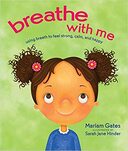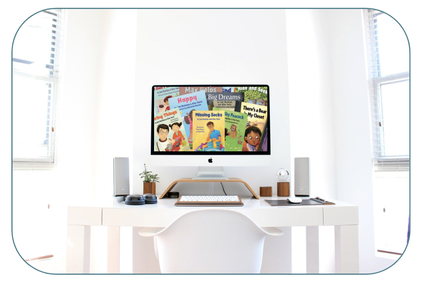|
Note: If you are in search of the free ebooks for guided reading, go to the "Free Books" tab, above. There are a number of challenges that make teaching guided reading tricky in virtual spaces. From access to books, to watching body language, sound issues, there are definitely some hurdles to get over. As we prepare to go back-to-school, one virtual guided reading challenge is prominent: figuring out how to listen in as individual students read without falling into a round-robin routine.
There is a solution that seems pretty simple. In fact, I think it is so simple that it has been hidden in plain sight. When we are face-to-face during guided reading and listening to individual readers, we want to hear ONLY the reader that is getting our attention, while we conduct a running record or engage in a conversation. Additionally, we don't want the readers who are NOT receiving our attention at that moment to listen in on our exchange with the student in our focus--for their sakes and for the sake of the student who is reading with us. To limit what we hear from the other students we can, of course, mute their microphones. To limit what they hear, we can simply ask them to turn their volume all the way down! This seemingly obvious solution allows us to stay in the group, rather than send students off into breakout rooms, which is clunky. Staying in the group by having the student you are listening to turn up the volume (while the others turn their volume down) allows you to keep that small-group feel to your virtual guided reading lessons. By staying in the group together, you can still watch the other students to see that they are engaged with the text. A little motion on the screen, should get the attention of everyone again. You can use a chat box, or even something as simple as a sign with a student's name on it, to let the group know who needs to turn their volume back up so you can read with the next student. As for access to books, there seem to be a few options.
In the end, shared reading and one-on-one conferring are likely to do more of the heavy-lifting in virtual literacy instruction. However, it is worth trying to figure out how to maintain some small group work for those students who really need it to succeed. Asking the other children to turn down their volume while you work with one child may be one way to make small group instruction work in virtual spaces.
5 Comments
EveWhen I am stressed (angry, afraid, nervous, etc.), I inadvertently hold my breath. In those moments, my husband will sometimes notice and ask, "Are you breathing, Babe?" At that point, I exhale with a rush of air and pay attention to what I am doing (and not doing) with my lungs! I am always struck by my unconscious response of holding my breath. Realizing that I often don't breathe when I most need to has led me to actually practice breathing. Perhaps this sounds silly. Breathing is automatic, right? Well, sort of. While we have natural rhythms to our breath, intentionally filling and emptying our lungs completely requires focus and practice. One of my favorite times to intentionally practice breathing is anytime I am waiting. Because I use technology to teach, I am regularly asking whole groups of adults to wait. To wait for a hiccup in the wifi. To wait for a video to load. To wait for a website to respond. In these moments I often teach breathing lessons. I just engage us all in taking several slow deep breaths. I am always startled by how satisfying such technology glitches can be, when a whole room full of teachers simultaneously tune into their breath. Everyone seems to realize just how much stress we carry with us, and we're to find an antidote that was literally under our noses. You too can use a technological pause as an opportunity to breathe deeply with your students. Inevitable tech hiccups can also offer spontaneous but regular practice of in-the-moment breathing routines in your classrooms. You can lay the groundwork for these incidental breathing lessons by launching the school year with a formal-ish breathing lesson. Conscious breathing is an antidote to worry, at a time when we can all find much to worry about. Even if it is a bit complicated by wearing masks, it is worth the effort. Here are a few books you might use to anchor your breathing lessons:  The Breathing Book by Christopher Willard and Olive Weisser, includes a series of exercises to help students become aware of their breath. It is so beautifully practical, and even includes a breathing practice where you sit and hold a book.  Breathe with Me: Using Breath to Feel Calm, Strong, and Happy by Miriam Gates refers to breathing as a "superpower." This book is so relatable for young children and includes specific breathing strategies to try in different situations.  I Am Peace: A Book of Mindfulness by Susan Verde and illustrated by Peter H. Reynolds, speaks to the relief that taking a breath offers in a moment of worry. It is a lovely text for introducing the idea that we can learn to manage our minds. I invite you to use one of these books to introduce children to the idea that they can intentionally use their breath to serve them in moments of worry. This year promises some stress and some technology hiccups--opportunities to practicing breathing. When there is so much that we can't control for our students, especially this year, teaching them a breathing routine offers them the seed of a habit that can serve them for their entire lives. And if you feel like you need to take a deep breath yourself, you might consider this book to help you get started. You can start now. Just breathe. |
AuthorDr. Jan Burkins is a full-time writer, consultant, and professional development provider. Categories
All
|


 RSS Feed
RSS Feed